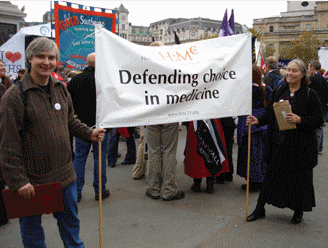CARCINOSIN-KEY NOTES
Mind
- Emotional, PASSIONATE individuals with strong desires,
push themselves, work hard, strong sex-desire (from
early age), surges of passion, outbursts of emotion,
expression, live life intensely.
- FASTIDIOUS, need for order and control over life.
Cannot rest when things are not in proper place.
- Restlessness, discontent, desire to travel.
- Conscientious, great sense of duty, responsible (Aur, Kal-c, Nat-s, Nat-c, Mag-m).
- Anticipation. Lack of self-confidence.
- PRECOCITY.
- SYMPATHETIC. SENSITIVE to suffering of people, animals, planet.
Anxiety for others. Horrible things affect profoundly.
- Affectionate. Want to please other people.
Fears not to be accepted, not to be loved.
- SENSITIVE TO REPRIMANDS, esp. in children.
Ailments from rudeness, reproaches.
- Suppress their emotions, the hurt. Yielding, bearing all suffering without protest.
- Ailments from repression
excessive parental control,
prolonged childhood suffering,
severe education, too early responsibility.
- EASILY OFFENDED, intolerant of contradiction, av. to
consolation.
- Fears: high places, animals, dogs, failure (exams), thunderstorm.
- Anxiety about health (cancer); for others.
- Sensitive to sensual impressions, art, nature.
Love thunderstorms (Sep).
- Sensitive to music, rhythm. Love dancing (Sep).
Music agg., may cause weeping.
- Slow mental development: easily distracted, difficult concentration.
Generalities
- Warm blooded, but mostly agg. heat and cold.
- amel. Sea. (or agg., or alternating).
- amel. Short sleep.
- amel. Evening.
- agg. Vaccination.
- Periodicity. agg. 1-6 pm, esp. 5-6 pm. Every 7 days. Annual.
- CONTRADICTORY AND ALTERNATING STATES.
- Mononucleosis, neurodermitis.
- Severe inflammatory illness (whooping cough, pneumonia) in early life, childhood.
- PAST/FAMILY HISTORY OF CANCER, DIABETES, TUBERCULOSIS, PERNICIOUS ANEMIA, INFECTIOUS DISEASES.
- Childhood diseases: too soon; or appear after puberty;
very severe, or absent.
Food and drinks
- The same food can alternately be desire or aversion.
- Desire: Chocolate, sugar, fat, raw potatoes, spices, sweet and sour.
- Aversions: Fruit, potatoes, milk, salt.
- agg.: Eggs.
Vertigo
- High places.
Head
- Migraine, alt. with asthma.
- Constrictive feeling in brain. Pulsating deep in brain.
Headache agg. right side, before storm.
Pain in forehead above eyes, amel. open air.
Eye
- Blue sclerae.
- Frequent blinking, winking. Tics. Twitchings.
Nose
- Hayfever.
- Chronic coryza. Sinusitis.
Face
- Acne.
- Twitching, tics, esp. eyelids, -brows. Grimaces.
Mouth
- Aphthae.
Throat
- Scraping, agg. before speaking.
- Sensation of lump.
Stomach
- Anxiety or excitement felt in stomach.
- Nausea riding in car.
Abdomen
- Constrictive pain amel. pressure, bending forward, warm drinks.
- Flatulence, distention, with colic in babies.
Rectum
- Severe constipation, even without desire.
- Dry hard stools like stones.
- Burning pain colon ascendens.
Female genitalia
- Sexual desire high. Masturbation in children.
- Dysmenorrhea. Pain labor-like, cramping.
- Ovarian cysts, agg. right. Fibroids in uterus. Endometriosis.
Respiratory
- Asthma, at young age, from fright, amel. or agg. at sea.
- Cough agg. morning, (un)dressing, washing, shaving, stretching neck, yawning.
- Whooping cough, long-standing; chronic pneumonia.
Chest
- Swelling breasts before menses.
- Chronic mastitis.
Extremities
- Trembling of muscles, with itching, agg. arms, thighs.
- Rheumatic pains, amel. warmth, slowly moving.
- Weakness, agg. lower limbs, amel. motion.
Sleep
- SLEEPLESSNESS, esp. in children; children have to be rocked.
Wake suddenly as from fright.
- Falling asleep difficult from thoughts, wake frequently,
esp. 4 am and can't sleep afterwards.
- Position: GENU-PECTORAL.
- Dreams of searching someone he can't find.
Skin
- Dark, brownish complexion. CAFE-AU-LAIT spots.
- MOLES, PIGMENTED NAEVI. M. Recklinghausen.
- Kelo‹d.
- Acne (face, upperback, sternum).
- Boils.
- Eczema: Between shoulderblades, sternum. agg. Milk.
Neurodermitis.
- Itching agg. undressing.
- Warts: lips, abdomen, back of hands, fingers, about fingernails, footsoles.
Compl.
Alum., Ars., Ars-i., Bell-p., Calc., Calc-p., Graph., Lach., Lyc., Med., Nat-m., Nat-s., Nit-ac., Op., Psor., Puls., Sep., Staph., Sulph., Syph., Thuy.
Dd
Ars., Aur., Cocc., Nat-m., Med., Phos., Puls., Sep., Staph., Tub.

















